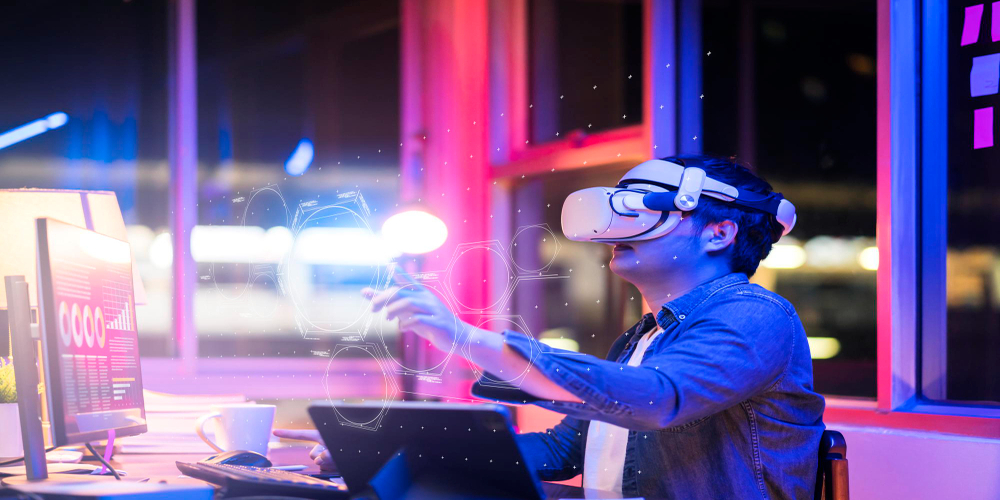5 Key Technologies to Use Metaverse Application Development
Technology | 05-01-2023 | Luna Isakh

There are many ways to develop applications for Metaverse. For example, we can use the DISTRIBUTED COMPUTING technique, the ALTERNATE REALITY technology, the 3D MODELING AND ANIMATION technique, the ARTIFICIAL INTELLIGENCE method, and the MACHINE LEARNING method. These five technologies are all important, and they can greatly impact the success of your application development project.
ALTERNATE REALITY
A metaverse is a simulated ecosystem where users interact in a 3D virtual space. It can be used for personal or enterprise purposes. Many companies have started taking steps to secure a place in the virtual world.
Metaverse applications are expected to be the next big thing after social networking. They are gaining attention from both consumers and tech companies. These companies are looking for innovative solutions.
One such company is Niantic, which recently raised $9 billion in funding. They also have a vision for augmented reality. This vision includes a "disruptive" technology that will replace screens with brain-computer interfaces.
Another is Alon Grinshpoon, who has developed a cloud-based virtual reality startup. He has gained close to $4 million in capital from high profile investors.
3D MODELING AND ANIMATION
With the rapid adoption of virtual reality, the animation industry has entered into a new era. It's a time when companies can create immersive experiences to improve brand equity and participation. As a result, there's a growing need for expert crypto artists.
The metaverse is a virtual environment that can be accessed using 3D glasses. In the metaverse, users can interact with other users via avatars. They can buy digital products, participate in meetings, or work in virtual environments.
This technology can be used in many industries, including health and fitness, HR, and marketing. Companies can use the technology to attract people to their products, and offer them an alternative place to work.
Creating a customized avatar is easy. A variety of software programs are available to make a model, including SketchUp, Blender, and Rhino. Some of these tools also allow users to make realistic images from the models.
DISTRIBUTED COMPUTING
There is a huge opportunity for developers to create applications that leverage the power of distributed computing and the Metaverse. These systems will enable a new way of accessing content. They will allow for monetization opportunities and provide an engaging experience.
Developers have long imagined the experience of hundreds of live players navigating a virtual universe. This has been made possible through procedural generation. The same concept applies to a Metaverse, where virtual objects interact with each other in real time.
To achieve this, developers will need to use advanced computing capabilities. Fortunately, this type of technology is already available. It includes edge computing, which will help improve virtual reality applications and reduce the cost of headsets.
The technology also provides the ability to query distributed metaverse data. These are critical in order to deliver content quickly to users.
ARTIFICIAL INTELLIGENCE AND MACHINE LEARNING
With the advent of AI and virtual reality, the Metaverse has the potential to be a powerful new learning platform. But it also comes with challenges. Some of these are related to inclusion and security. Let's discuss how and why AI can help address these challenges.
The first step to building a powerful metaverse is to develop artificial intelligence. This will allow machines to learn and respond effectively to the inputs they receive. It will also enable them to parse massive amounts of data in real time.
AI will enable machines to interpret user inputs, regardless of the language used. This will make it possible for machines to understand the causality of an event and then take action. A machine learning model can then be used to automatically automate smart contracts and distributed ledgers.
5G
The IoT powered Metaverse is designed to bring reality to the digital world. It helps people create virtual worlds, complete with realistic experiences and exact replicas of real-world environments. These systems are enabled through high-speed data communications and edge computing.
In order to provide users with immersive experiences, the service must be delivered with ultra-low latency. The human perceptible limit for response time is one millisecond. But for many future use cases, ultra-low latencies will not be sufficient. So, future networks will need to incorporate a set of new protocols.
A survey by American telecommunication equipment company Ciena showed that 38% of business professionals listed unreliable network performance as a major limitation to the success of their organizations' metaverse initiatives. This indicates that contemporary connectivity solutions will not be able to satisfy the needs of a full-fledged Metaverse.

.jpg)

.jpg)
.jpg)
.jpg)
.jpg)
.jpg)


